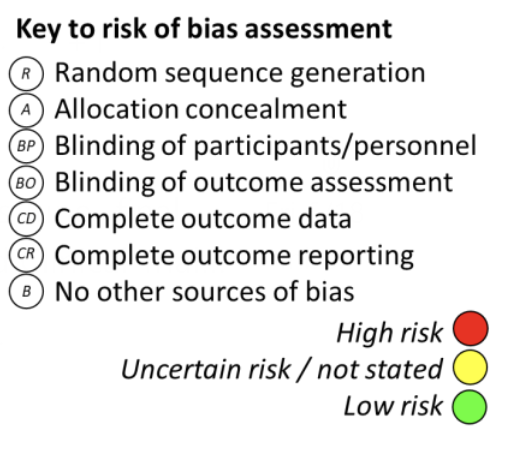ISN Academy: Haemodialysis
Intradialytic non-immersive VR exercise program improves physical function, but is the “achievement unlocked”?
An intradialytic non-immersive virtual reality exercise programme: a crossover randomized controlled trial
Martinez-Olmos et al. Nephrol Dial Transplant (2022);37(7):1366-1374.
Summary:Fifty-six patients on stable haemodialysis were randomized to participate in this crossover trial, investigating the influence of a virtual reality (VR) exercise program on physical function. The intervention was a schedule of VR sessions playing “Treasure Hunt”, an adapted video game where the player must use their lower limbs to try to catch objects and avoid obstacles, tracked by a motion capture camera. The game is non-immersive, meaning that players view a computer screen rather than wear a headset. Sessions were conducted during HD sessions three times per week, and consisted of a warm-up, 1-6 sets of the game lasting 3-6 minutes (progressively increasing to up to 40 minutes total), and a cool-down, supervised by a physiotherapist. Participants were randomized to the intervention or usual care for 12 weeks, before crossing over for a further 12-week period. By the end of the trial, 33 patients had been analysed, with dropout primarily due to declining participation in assessment tests. The intervention resulted in a 0.14m/s improvement in the 4-min gait speed compared with the control period. There were also improvements in a variety of secondary measures including the sit-to-stand-10 test (5.8 seconds faster) and 6-minute walk test (85.2m further). Overall adherence to VR sessions was 74.4%, although it was notably lower in those who waited 12 weeks before starting the intervention. There were no adverse events during the HD sessions related to the VR program.
Comment: The benefits of regular exercise among dialysis patients are clear, yet achievement of this goal is hampered by a variety of patient factors (such as lack of time, lack of motivation, or co-morbidities reducing exercise capacity) and health-care system factors (such as the need for more physiotherapists and exercise physiologists, group exercise classes, and equipment). The idea of making physical activity more entertaining and engaging holds promise, although clinical centers may not be able to provide computer screens and motion capture cameras to many patients, and supervision by a physiotherapist may still be needed. Larger scale implementation studies are needed before it could be widely adopted, with simplification of outcome assessment to improve participant retention, and evaluation of the need for supervision. Nevertheless, this innovative approach is an exciting discovery
in the “Treasure Hunt” for interventions that can improve patient exercise habits.
ISN Academy: Anemia
Daprodustat efficacious in treating anemia in incident dialysis patients, but concerns about cardiovascular risk persist
Efficacy and safety of daprodustat for treatment of anemia of chronic kidney disease in incident dialysis patients
Singh et al. JAMA Intern Med. (2022); 182(6):592-602.
Summary: The ASCEND-ID multi-center non-inferiority trial randomized 312 adult incident dialysis patients to receive either daprodustat or darbepoetin alfa for anemia management. The study included patients either planning to start haemodialysis or peritoneal dialysis within 6 weeks from screening, or having started dialysis within 90 days before randomization. Patients had anemia (hemoglobin 8-10.5g/dl), were naïve to erythropoiesis-stimulating agents (ESAs) or had received limited ESA treatment and were iron-replete (serum ferritin level >100ng/mL). During the evaluation period (weeks 28-52), the daprodustat group had a mean hemoglobin concentration of 10.5g/dL versus 10.6g/dL for the darbepoetin alfa group, with an adjusted mean treatment difference of −0.10g/dL (95% CI, −0.34 to 0.14g/dL), indicating noninferiority. Both drugs decreased the mean monthly IV iron use with no superiority of one over the other drug, and the rate of transfusion of red blood cells or whole blood was similar between the groups (daprodustat, 18 patients [12%]; darbepoetin alfa, 21 [14%]). Both drugs had a comparable overall safety profile with adverse event rates of 76% for daprodustat vs 72% for darbepoetin alfa. The overall rate of all-cause mortality, however, was 11% in the daprodustat arm compared with 8% in the darbepoetin alfa arm, and a first occurrence of a major adverse cardiovascular event (MACE) occurred in 19 patients (12%) in the daprodustat group and 15 (10%) in the darbepoetin alfa group. Statistical analyses were not provided for these exploratory safety outcomes.
Comment: Anemia management among incident dialysis patients is an important area of research given the major physiological changes during this period and the associated spike in mortality risk compared to the maintenance dialysis phase. Higher doses of conventional ESAs are associated with increased rates of myocardial infarction, stroke, thrombosis, tumour progression and death, and it was hoped that daprodustat and other hypoxia-inducible factor prolyl hydroxylase inhibitors could effectively manage anemia while avoiding this potential risk. The present trial demonstrates non-inferiority of daprodustat in anemia management among incident dialysis patients, consistent with the findings for patients on maintenance dialysis in the ASCEND-D trial, and not on dialysis in the ASCEND-ND trial. Unfortunately, as with these two related trials, there was no improvement in the rate of MACE. It remains unclear how much of this risk is explained by the underlying risk factors among people with kidney failure, the effect of increasing haemoglobin by any mechanism, or direct mechanisms of the agents themselves. As the triallists themselves discuss, “the scientific and medical communities are still waiting for long-term safety data and recommend additional studies”.
ISN Academy: Chronic Kidney Disease
Zibotentan shows potential in systemic sclerosis-associated chronic kidney disease
Zibotentan in systemic sclerosis-associated chronic kidney disease: a phase II randomised placebo-controlled trial
Stern EP et al. Arthritis Res Ther. (2022) 24(1):130.
Summary: The authors reported the results of a phase II trial of the safety and efficacy of highly selective endothelin A receptor antagonist zibotentan given orally in patients with kidney involvement in systemic sclerosis (SSc). Endothelin plays a role in vasculopathic SSc complications, and non-specific antagonism with bosentan and macitentan are employed for SSc-related pulmonary hypertension and digital vasculopathy, but there may be a role for selective antagonism to prevent SSc-related CKD. The first stage of the trial, ZEBRA 1, was a 1:1 placebocontrolled, double-blind trial of zibotentan 10mg daily in 13 patients with SSc and chronic kidney disease (CKD) grade 2 and 3A. Average eGFR increased across patients treated with zibotentan and declined in the placebo group, but the significance of these differences could not be tested statistically. The difference was more marked at 52 weeks than at 24 weeks, suggesting an effect beyond haemodynamics alone. There was no apparent effect on serum vascular cell adhesion molecule-1 (sVCAM1) levels, a biomarker associated with scleroderma renal crisis (SRC) but without an established role in scleroderma-related CKD. There was, however, a trend towards a reduction in urinary monocyte chemoattractant protein 1 (MCP-1) levels, which may be associated with scleroderma-related CKD. ZEBRA 2A was a 2:1 placebo-controlled, single-blind trial in patients with a history of SRC not requiring dialysis. Only 4 patients were recruited, such that efficacy was unable to be determined. Lastly, ZEBRA 2B was an open-label pharmacokinetic study of zibotentan in 8 patients requiring dialysis, with dose escalation from 2.5mg daily to 10mg daily, suggesting that intermittent dialysis dosing of 2.5-5mg would lead to zibotentan levels within the therapeutic range. The number of adverse events and serious adverse events was balanced between the treatment and the placebo groups in all trials, although zibotentan may be associated with fluid retention.
Comment: The treatment options for scleroderma-related kidney disease, including chronic kidney disease or scleroderma renal crisis, remain very limited. The results of the ZEBRA substudies suggest that zibotentan is generally well-tolerated and could potentially improve eGFR in patients with SSc and CKD not requiring dialysis. The major limitations of this early trial are an extremely low number of randomised patients and a predominance of the limited form of scleroderma in ZEBRA1, making exact interpretation of the results challenging, but the study yields important initial data about the tolerability and pharmacokinetics that will be very useful for further clinical trials of this potential treatment strategy.
ISN Academy: Transplant
Double dose of pneumococcal vaccines beneficial for patients on kidney transplant waitlist, but not kidney transplant recipients
Immunogenicity and safety of double dosage of pneumococcal vaccines in adult kidney transplant recipients and waiting list patients: A non-blinded, randomized clinical trial
Larsen et al. Vaccine 40 (2022) 3884-3892.
Summary: In this multicenter phase 3, non-blinded trial, 76 kidney transplant recipients and 65 patients on the kidney transplant waiting list were assigned to receive a normal or double dose of 13-valent pneumococcal conjugate vaccine (PCV13) and 23-valent pneumococcal polysaccharide vaccine (PPV23) 12 weeks apart. The primary endpoint was the proportion of participants with a pneumococcal antibody geometric mean concentration of ≥1mg/L, calculated by the concentrations of the 12 pneumococcal serotype-specific IgG antibodies, five weeks after the last dose. For patients on the waiting list, the double dose resulted in a significantly higher proportion of participants reaching the primary endpoint (66.7% vs 35.5%, p=0.015), but at 48 weeks, the difference was no longer statistically significant (38.7% vs. 29%, p=0.421). Among kidney transplant recipients, no difference was observed in reaching the primary endpoint (25.7% vs 35.1%, p=0.386). Normal or double dosing resulted in a similar proportion of patients with a ≥2-fold increase in serotype-specific antibodies in both patient cohorts, and all groups demonstrated improvements in the antibody levels at 48 weeks compared to baseline. There were no differences in adverse events. One patient on the transplant waiting list died due to pneumococcal infection (serotype 10A) after PCV13.
Comment: Current recommendations of pneumococcal vaccination programs for kidney transplant recipients are based on extrapolation from patients with other conditions associated with immunocompromise, so the aim of this study was to evaluate the immunogenicity and safety of a double dose of pneumococcal vaccines in a kidney-specific cohort. This evaluation is complicated by the lack of clear thresholds to assess antibody concentrations. The study demonstrated no added benefit for the double dose regimen for kidney transplant recipients, but there was an increased proportion of transplant waiting list patients developing protective immunity with this approach. Implementation of a double dose regimen into the routine management of kidney transplant waitlist patients may be reasonable given the potential severity of pneumococcal disease. Further studies would be needed to confirm if this benefit applies to the larger dialysis population.
ISN Academy: Transplant
Low-exposure extended-release tacrolimus doesn’t lower toxicity, but does increase donor specific antigen formation following acute living renal transplantation
Two-year outcomes of low-exposure extended-release tacrolimus and mycophenolate mofetil regimen in de novo kidney transplantation: A multi-center randomised controlled trial
Hidaka Y et al. Clin Transplant. (2022) 2022;36(6):e14655.
Summary: Sixty-two living donor kidney transplant recipients from 2 centres in Japan were randomised to receive extended-release tacrolimus in a low-exposure regimen targeting an estimated area under the blood concentrationtime curve (eAUC) of 200 ng⋅h/ml for the first 3 months post-transplant and 150ng⋅h/ml thereafter), or a standard exposure (target eAUC = 250 ng⋅h/ml for 3 months then 200ng⋅h/ml). The basiliximab induction was standardised along with the steroid and mycophenolate regimen. In 2 years of follow-up, there were no differences in graft survival, eGFR, CMV antibody serological status, or CNI toxicity/chronicity scores on 1-month and 1-year kidney biopsies. The low exposure group was associated with a higher rate of acute rejections, which did not reach statistical significance (10% vs 0%, p = 0.11), and a significantly higher rate of de novo donor specific antibodies (13.3% vs 0%, p = 0.034).
Comment: Although reducing calcineurin inhibitor (CNI) toxicity is important in long-term graft survival, this study adds to established body of evidence that highlights the consequences of low CNI targets in the acute transplant period. In particular, the trend towards more acute rejection and de novo antibody generation with tacrolimus levels <4ng/mL observed in the study supports the findings of other CNI minimisation trials that such levels should particularly be avoided in the first 12 months. Further studies with longer follow-up periods are needed to establish the longer term minimum CNI dose that prevents toxicity without increasing the risk of acute rejection or de novo DSA formation.






